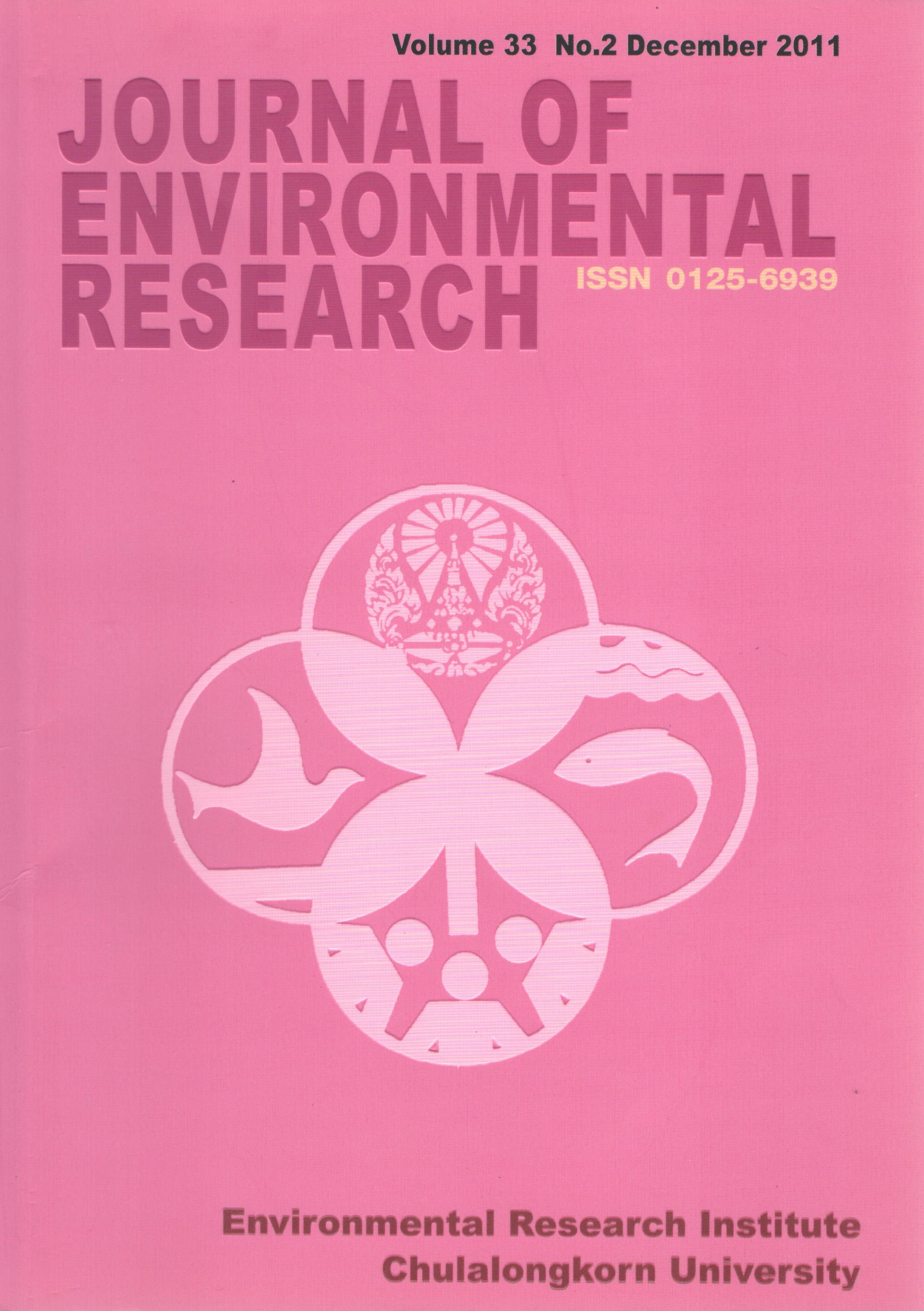Feasibility Study for Make-up Water Quality for Cooling Tower by Electro-Coacgulation Process
Main Article Content
Abstract
Cooling tower was a type of heat transfer equipment which was used to enhance heat rejection to the environment by increasing the surface contact between water and air. Water used in the cooling tower system had to be pretreated to prevent scaling and corrosion. As most factories in the northern part of Bangkok utilized both tap water and groundwater, which was known to contain large amount of minerals and suspended solids, water pretreatment was crucial before entering cooling towers or the heat-exchanging systems. Typical water pretreatment system consisted of sand filtration, carbon adsorption and ion-exchange resin adsorption to remove particles and minerals from water. Beside this, some research paper had reported the use of electrocoagulation technique in various applications to remove unwanted suspended and dissolve matter from water. Nevertheless, the utilization of this technique in water treatment for cooling water/heat-exchanging systems was not widespread. Hence, the aim of this feasibility study was to investigate technical, economic and energyconservation feasibilities by using aluminum sheet connected with DC power supply with its voltage was adjustable between 0 – 30 volt as well as the water resource optimization for electro-coagulation technique in cooling water system when using in combination with or replacing the conventional treatment process. We found that this technique is considered appropriate to replace some parts of the water treatment unit without adding chemical into the process. It helps reduce operating cost and water usage in softener regeneration process with less amount of wastewater.
Article Details

This work is licensed under a Creative Commons Attribution-NonCommercial 4.0 International License.
Published articles are under the copyright of the Applied Environmental Research effective when the article is accepted for publication thus granting Applied Environmental Research all rights for the work so that both parties may be protected from the consequences of unauthorized use. Partially or totally publication of an article elsewhere is possible only after the consent from the editors.

